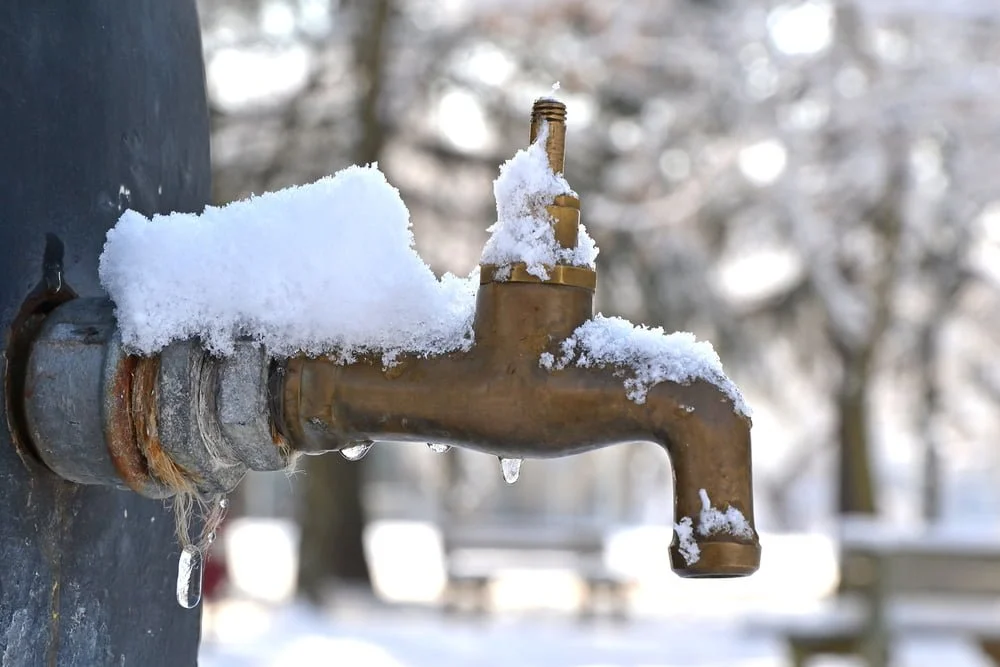Key Approaches for Preventing Frozen Plumbing in Cold Weather
Key Approaches for Preventing Frozen Plumbing in Cold Weather
Blog Article
How do you feel with regards to How to prepare your home plumbing for winter weather?

Cold weather can damage your plumbing, specifically by freezing pipes. Here's exactly how to prevent it from happening and what to do if it does.
Introduction
As temperature levels drop, the risk of icy pipelines rises, possibly causing expensive repair work and water damage. Comprehending just how to avoid icy pipelines is essential for homeowners in cold environments.
Prevention Tips
Protecting susceptible pipes
Wrap pipelines in insulation sleeves or utilize warm tape to safeguard them from freezing temperatures. Focus on pipelines in unheated or outside locations of the home.
Heating methods
Maintain indoor spaces appropriately heated, specifically locations with pipes. Open up cabinet doors to allow warm air to circulate around pipes under sinks.
How to recognize frozen pipelines
Try to find lowered water circulation from faucets, uncommon odors or sounds from pipes, and visible frost on exposed pipes.
Long-Term Solutions
Structural modifications
Think about rerouting pipes away from outside wall surfaces or unheated areas. Add added insulation to attic rooms, basements, and crawl spaces.
Updating insulation
Purchase high-grade insulation for pipes, attic rooms, and wall surfaces. Appropriate insulation helps preserve constant temperatures and lowers the danger of frozen pipes.
Protecting Outdoor Plumbing
Yard hoses and exterior faucets
Separate and drain pipes yard hoses before winter months. Install frost-proof spigots or cover outside taps with shielded caps.
Comprehending Icy Pipes
What creates pipelines to freeze?
Pipelines ice up when revealed to temperature levels listed below 32 ° F (0 ° C) for expanded periods. As water inside the pipes freezes, it broadens, taxing the pipe wall surfaces and potentially creating them to burst.
Dangers and problems
Icy pipelines can bring about water supply disturbances, property damage, and expensive repair services. Ruptured pipes can flooding homes and cause comprehensive structural damage.
Indications of Frozen Water Lines
Recognizing frozen pipes early can prevent them from breaking.
What to Do If Your Pipelines Freeze
Immediate activities to take
If you think icy pipes, maintain faucets available to eliminate stress as the ice melts. Make use of a hairdryer or towels soaked in hot water to thaw pipes gradually.
Conclusion
Preventing icy pipelines needs positive procedures and fast reactions. By comprehending the causes, indicators, and safety nets, house owners can secure their plumbing throughout cold weather.
6 Proven Ways to Prevent Frozen Pipes and Protect Your Home
Disconnect and Drain Garden Hoses
Before winter arrives, start by disconnecting your garden hoses and draining any remaining water. Close the shut-off valves that supply outdoor hose bibs and leave the outdoor faucet open to allow any residual water to drain. For extra protection, consider using faucet covers throughout the colder months. It’s also important to drain water from any sprinkler supply lines following the manufacturer’s directions.
Insulate Exposed Pipes
Insulating your pipes is an effective way to prevent freezing. Pipe insulation is readily available at home improvement stores and is relatively inexpensive. Pay close attention to pipes in unheated areas such as the attic, basement, crawl spaces, or garage. Apply foam insulation generously to create a buffer against the cold. You can also wrap your pipes in heat tape or thermostat-controlled heat cables for added warmth.
Seal Air Leaks
Inspect your home for any cracks or openings that could let in cold air. Seal any holes around the piping in interior or exterior walls, as well as the sill plates where your home rests on its foundation. Additionally, make sure to keep your garage door closed unless you’re entering or exiting. Leaving it open creates a significant air leak that can lead to frozen pipes.
Allow Warm Air Circulation
During cold snaps, it’s essential to allow warm air to circulate evenly throughout your home. Leave interior doors ajar to promote better airflow. Open kitchen and bathroom cabinets to help distribute heat consistently around the rooms. If you have small children or pets, be sure to remove any household chemicals or potentially harmful cleaners from open cabinets for safety.
Let Faucets Drip
A small trickle of water can make a big difference in preventing ice formation inside your pipes. When temperatures drop significantly, start a drip of water from all faucets served by exposed pipes. This continuous flow helps prevent the water from freezing. Additionally, running a few faucets slightly can relieve pressure inside the pipes, reducing the chances of a rupture if the water inside does freeze.
https://choateshvac.com/6-proven-ways-to-prevent-frozen-pipes-and-protect-your-home/

Hopefully you liked our part about How to prepare your home plumbing for winter weather. Thank you for spending some time to read our piece. Liked our blog? Please share it. Let somebody else locate it. I praise you for your time. Return soon.
Call Us Today Report this page